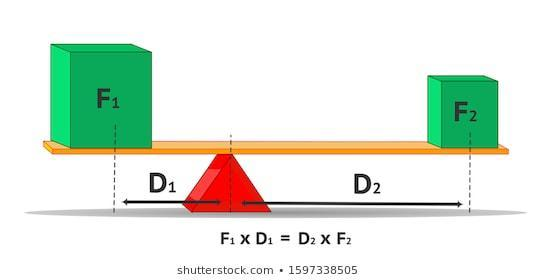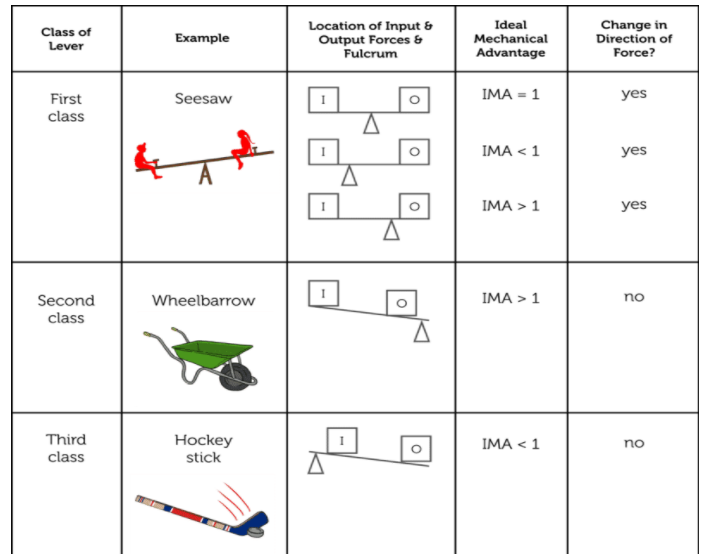
Which class of lever always has
Answer
504k+ views
Hint: A lever is a simple machine consisting of a bar that rotates around a fixed point called the fulcrum.
Complete step by step answer:
First of all, we must know that there are three basic classes of lever, called first-class, second-class, and third-class. A lever consists of a bar that rotates around a fulcrum. The mechanical advantage of a system is given by,

Then, in this case,
Now, let us compare all three classes of levers by analyzing the given figure,
In the first-class levers, the input force and output forces are on opposite sides of the fulcrum, the lever changes the direction of applied force. As both forces are the same distance from the fulcrum, the input distance equals to the output distance. So, the mechanical advantage will be equal to 1. i.e.
For both second and third class levers, the input and output forces are on the same side of the fulcrum, so the direction of applied force doesn’t change. In second-class levers, the input force applied is always farther from the fulcrum, I.e. the input distance is greater than the output distance, so the mechanical advantage will be always greater than 1. i.e.

In the case of third-class levers, the input force applied is closer, so the input distance is less than the output distance. So the mechanical advantage will always be less than 1. i.e.
So, we can conclude that second-class levers will always have the mechanical advantage greater than 1.
Note:
In the case of levers, only a first-class lever changes the direction of the force. Even the
Complete step by step answer:
First of all, we must know that there are three basic classes of lever, called first-class, second-class, and third-class. A lever consists of a bar that rotates around a fulcrum. The mechanical advantage of a system is given by,

Then, in this case,
Now, let us compare all three classes of levers by analyzing the given figure,
In the first-class levers, the input force and output forces are on opposite sides of the fulcrum, the lever changes the direction of applied force. As both forces are the same distance from the fulcrum, the input distance equals to the output distance. So, the mechanical advantage will be equal to 1. i.e.
For both second and third class levers, the input and output forces are on the same side of the fulcrum, so the direction of applied force doesn’t change. In second-class levers, the input force applied is always farther from the fulcrum, I.e. the input distance is greater than the output distance, so the mechanical advantage will be always greater than 1. i.e.

In the case of third-class levers, the input force applied is closer, so the input distance is less than the output distance. So the mechanical advantage will always be less than 1. i.e.
So, we can conclude that second-class levers will always have the mechanical advantage greater than 1.
Note:
In the case of levers, only a first-class lever changes the direction of the force. Even the
Recently Updated Pages
Master Class 12 Economics: Engaging Questions & Answers for Success

Master Class 12 Maths: Engaging Questions & Answers for Success

Master Class 12 Biology: Engaging Questions & Answers for Success

Master Class 12 Physics: Engaging Questions & Answers for Success

Master Class 4 Maths: Engaging Questions & Answers for Success

Master Class 4 English: Engaging Questions & Answers for Success

Trending doubts
Give 10 examples of unisexual and bisexual flowers

Draw a labelled sketch of the human eye class 12 physics CBSE

a Tabulate the differences in the characteristics of class 12 chemistry CBSE

Differentiate between homogeneous and heterogeneous class 12 chemistry CBSE

Why is the cell called the structural and functional class 12 biology CBSE

Differentiate between insitu conservation and exsitu class 12 biology CBSE

Students Also Read



